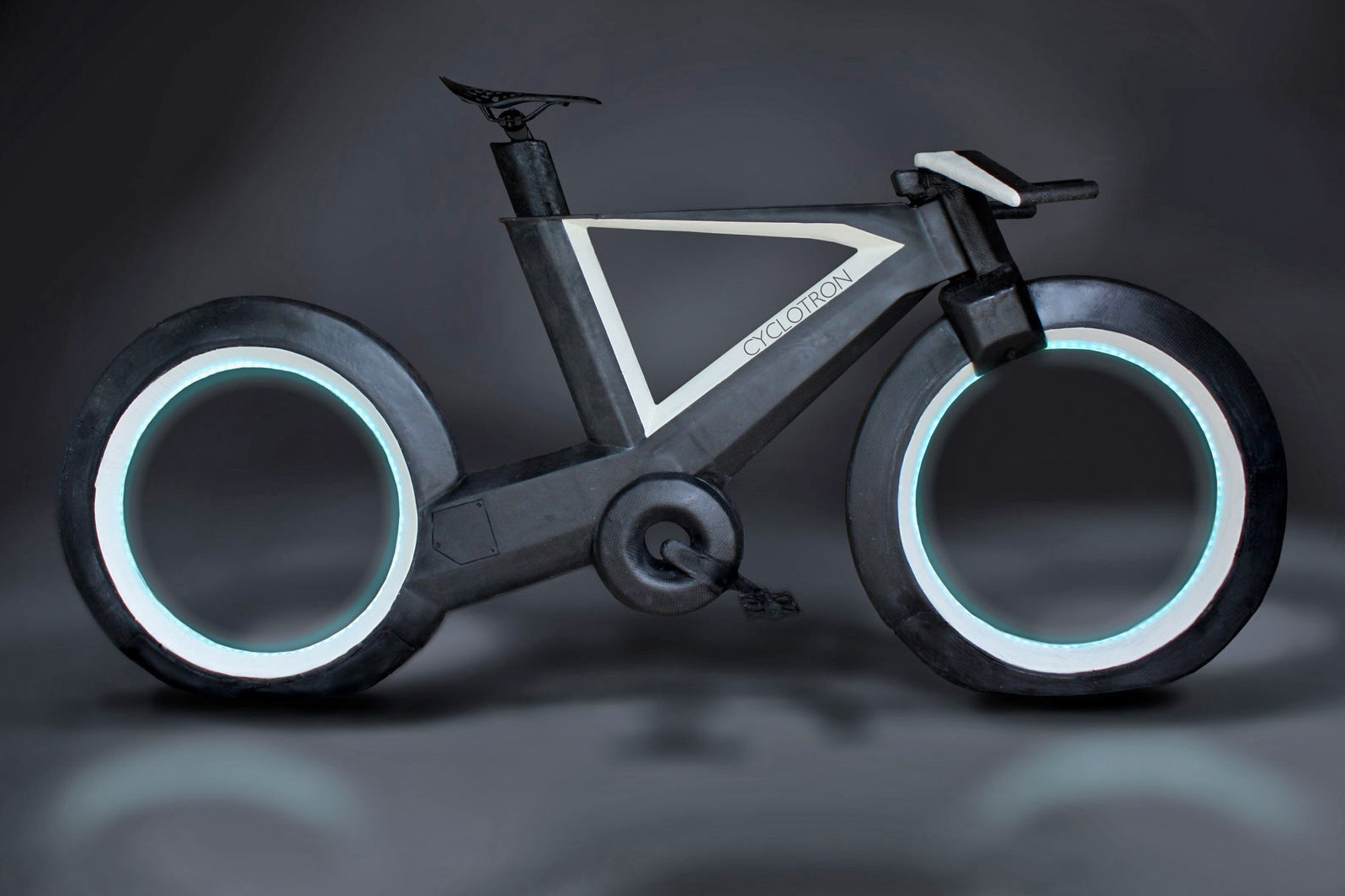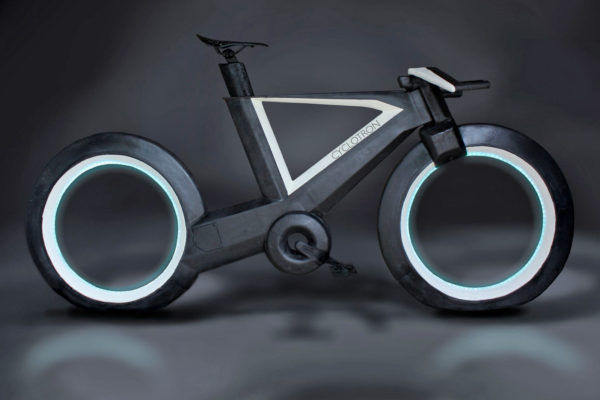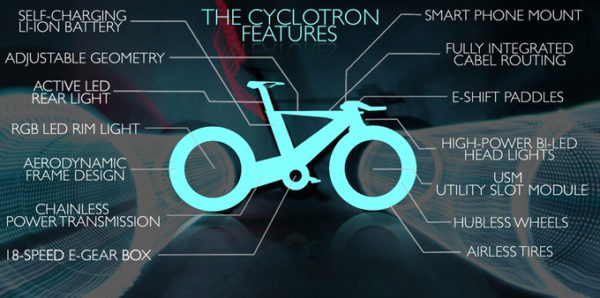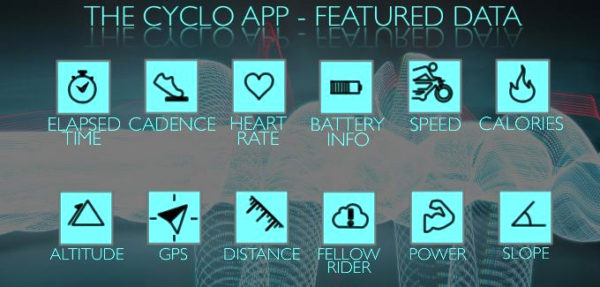OK, now if we would have looked at this a month before it started its crowdfunding campaign, like many people I might have just dismissed it. I mean come on, are we really ready for a Tron-looking bike built around hubless wheels? Or is it even ready for us? The answer to that is apparently, yes. More than enough people have put their money where their mouths are to more than double the funding the Cyclotron bike team needed to get their project out of technology and design development, and off the ground towards production. Take a closer look with us at what could be one of the most technology-integrated bikes rolling around town, with it built-in electronic shifting gearbox, sensors, lighting, and much more…
The Cyclotron could be the coolest way to get around town. The bike starts with the pretty innovative hubless design idea and adds a carbon frame, completely internalized drivetrain, and a good bit of electronic tech. While it isn’t the first hubless bike we’ve seen, it certainly is the closest we’ve seen one making it into serial production. I mean, they’ve pre-sold over 100 of them already.
The Cyclotron makes bold claims about being the future of cycling. While it may be innovative and cool looking, I wouldn’t worry about Tron bike replacing your trusted spoked wheels and double-diamond frame too soon. That said the introduction and integration of electronic shifting, data & performance collection sensors, and mobile connectivity certainly look like they are taking a firm foothold in the bike industry. Even the integration of smart activated, automatica lighting and the option for a motor-assist function seem to be common trends.
Watching the prototype bike ride around in the daytime gives a bit better sense of what we are really looking at from a bike perspective. The Cyclotron is a fairly long stretched out affair with a narrow aero bull horn handlebar (although that appears to be able to be flipped up for a more upright riding position.) There is no talk of geometry and seeing it ridden, it seems like it isn’t the most stable bike in a straight line that I’ve ever seen. Here’s hoping that is sorted out in the production process.
The bike has a almost completely enclosed design for claimed improvements of aerodynamics and protection from the elements. It uses a specially developed rim brake caliper that is neatly hidden inside the frame, but accessible via a small access port. The outer profile of the rim we see is a full-coverage wheel cover that only opens up a bit at the bottom to reveal the solid polymer, airless tire. That likely will limit the bike’s use to some degree as it won’t be able to handle a very irregular riding surface (or curbs if you aren’t super careful) and wouldn’t be likely to have a very smooth ride.
The drivetrain is all internal as well. Three options seem to be available as part of the Kickstarter pledges. A mechanical shifting 12 speed sequential gearbox will run 1200€ and a mechanical 18 speed version for 1400€ with the remains of an early-bird backer special. If you bump all the way up to 2700€, you get a electronically shifting 18 speed gear box, all still handled internally. Complete bike weights are claimed to start around 11.5kg/25.35lb, with three frame sizes on offer.
The bike is the latest in the Smart Bike category, with its sensors controlled by a co-developed Cyclo-App. It has an onboard Li-Ion battery to power its light and sensors, and even includes a dynamo generator that can be engaged when battery power is low to recharge on the go. Through the app you get connection to the BTLE sensors, paired navigation, and the option for a training plan. The app also powers an autonomous emergency reporting protocol and theft protection function. With various levels of service contracts, you can get advanced training & tracking, or even a full free replacement in case of theft.
Even though it might look like a futuristic racer, it was developed with usability in mind and will have optional utility add-ons that fit inside the open wheel platform to either haul things like groceries or to attach a child-carrying sidecar. After hitting their highest crowdfunding stretch goal, they’ve even added an e-bike motor that simply will fit inside of the rear wheel for a bit of pedal-assist.
The team is said to have secured enough funding to complete all of the design and development up to this point, with patents in process for several elements of the Cyclotron. The Kickstarter is then exclusively to pay to build this first round of production bikes. With that set the Kickstarter will run for just 3 more days, before production begins this fall. Product demos will happen in spring 2017, along with final testing, with a delivery date expected one year from now in July 2017.




